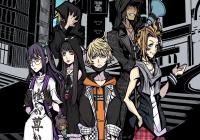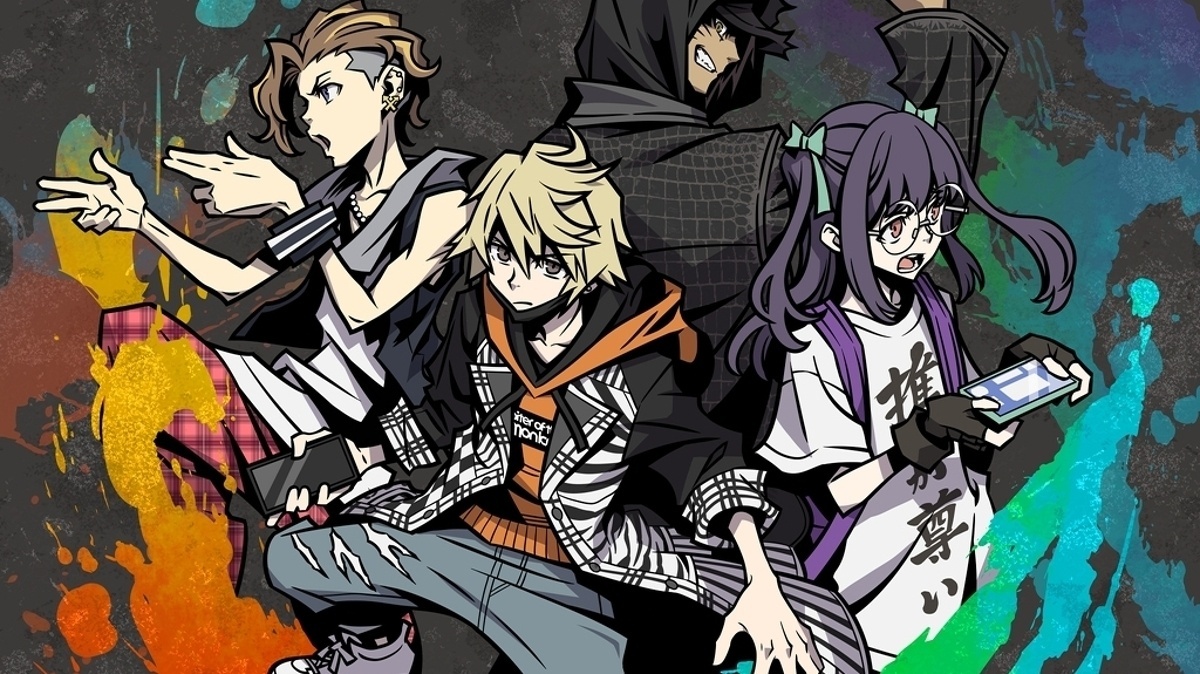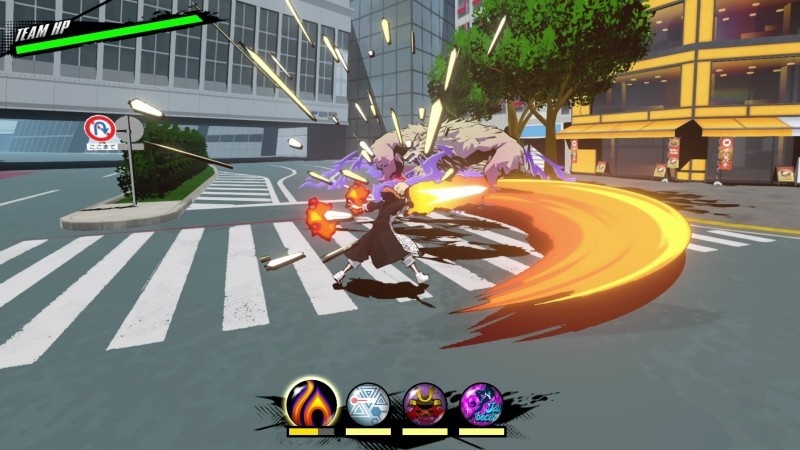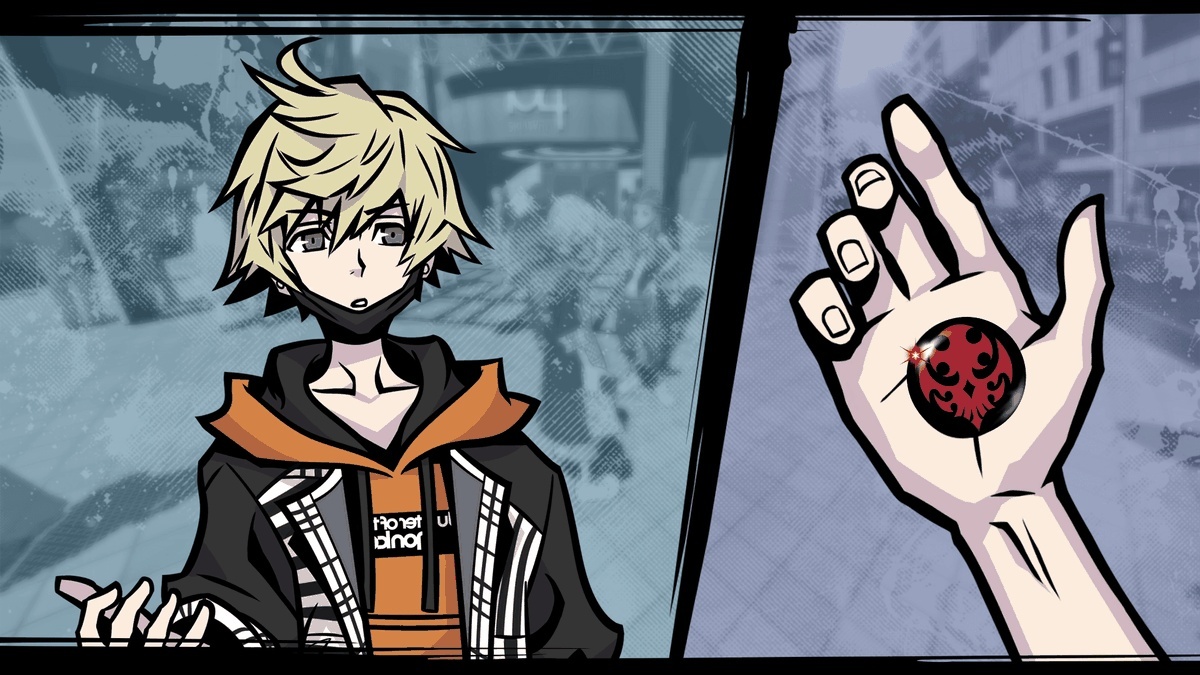NEO: The World Ends with You (PlayStation 4) Review
By Renan Fontes  27.07.2021
27.07.2021

The World Ends with You's original Nintendo DS release is nothing short of a masterpiece. Taking full advantage of the handheld's dual screens, the RPG juggled a hybrid blend of button and touch based combat with an endearing script dripping in style. While its mobile and Switch rereleases ultimately failed to translate the gameplay properly, TWEWY has maintained a loyal fanbase eagerly awaiting a proper sequel. Nearly a decade and a half later, NEO whisks audiences back to the Underground they fell in love with - albeit with some significant changes. A brand-new Reaper's Game is here, for better and for worse.
The World Ends with You was best defined by its strong character development, amazing gameplay catered to the Nintendo DS specifically, and a well written script that was bolstered by smart localisation. Any sequel demands to be judged by these metrics solely due to how well the original pulled them off. Neku starts out as an insufferable cliché, only to develop into one of Square Enix's most nuanced protagonists over a discernible period of time. Needing to control two characters at once across two screens forces the audience to think about gameplay on a deeper level than the average RPG while also raising the skill ceiling. Jargon, lingo, and slang are a staple of the story, but careful translation keeps everything legible.
NEO: The World Ends with You has a tough act to follow, so it pivots while maintaining as much of its foundation as possible. Character development generally takes a backseat to worldbuilding, but protagonist Rindo has a surprisingly subtle arc that stretches through the whole story. Combat obviously can no longer occur across two screens simultaneously, but multiple characters can still be controlled in-battle at once. The sequel's script is nowhere as strong as the first game's was, but the localisation does a great job at keeping the tone consistent between titles. This is a sequel that strives to offer comfortability for the series' fans.
One of the series' main hooks is that the story is set in a fictionalized version of the real world Shibuya, one of Japan's fashion centres. This not only influences the aesthetics' sense of style, it grounds the narrative in some semblance of modern day reality - something that's always been a novelty for the RPG genre. Although the original took place in the late 2000s, with flip phone and all, NEO updates the timeline to circa 2020 while acting like the events of the first game happened three years prior. This is a necessary concession to make smartphones a part of the plot, but this has the unfortunate consequence of making the story feel like a sequel to the recent anime adaptation instead of the actual video game.
This is a minor hiccup in the grand scheme of things as the modern setting lends itself wonderfully to the revamped Shibuya. Swapping gameplay from a 2D plane to three dimensions does wonders for the city. Dynamic fixed camera angles show the player exactly what they need to see at all times while lending overworld exploration visual direction reminiscent of early PS1 RPGs that lacked camera control. NPCs walk about in faceless hordes, living their lives and actively going about their business. Buildings tower in the distance as shops line the streets, several of which can actually be visited or have their own unique storefronts, if nothing else. The amount of care and detail put into creating a 3D Shibuya is downright loving.

The obvious comparison is that Shibuya is analogous to an RPG town, but it's better to think of it as a living dungeon with puzzles, side quests, and secrets to uncover for those who look hard enough. Like the original, gameplay is divided into a day-by-day structure where each day serves as its own chapter. Rindo and his party will be tasked with a goal to complete in Shibuya before being sent out on their leisure. This keeps gameplay focused while organically moving Rindo through the city as he's forced to explore. Given that the Reaper's Game is framed more like a competition than a high stakes event this time around, Shibuya comes off even livelier.
Time has changed Shibuya as much as it has changed the Reaper's Game. Neku's Game had him teaming up with a single partner to survive. Rindo's Game encourages active team building, with players gaining access to a third-party member almost immediately. Not just that, Rindo has the ability to time travel, breaking the very day-by-day structure these Games are built on. This is weaponized through gameplay to give Rindo's team an advantage, playing out days in earnest before turning back the clock and rigging things in his favour.
All things considered, time travel is more interesting on paper than it is in execution. Time travel set pieces are fairly straight forward, simply requiring Rindo to go back in time before something happened. It's rarely ever thought provoking and mainly just exists to stretch out a few days. The concept of time travel ends up getting more mileage narrative than it does mechanically, but its gameplay role is ultimately a net negative. It's downright repetitive needing to replay certain days, which periodically hurts the pacing. When considering other titles in the genre that make intelligent use of time travel, like Chrono Trigger and Radiant Historia, one can't help but wonder what Square Enix was trying to achieve with the mechanic.
Not everything's changed, however. Scanning still plays a big gameplay role, both in allowing to read the thoughts of NPCs and fight enemies. NPC dialogue is still a highlight of the script, with little flavour text adding personality to the world. Scanning also functions as a puzzle tool, requiring to find the right NPCs to read at times. For combat purposes, Scanning allows to see Noise - the icons of enemies in the overworld. By running through Noise, it's possible to aggro and chain them together to fight multiple battles at once. This not only increases drop rate for items, it's simply the fastest way to engage with the battle system. It's important to keep in mind that Rindo has a limited amount of time to chain Noise after absorbing one, so it's usually best to aggro a few at once.

The World Ends with You's relationship with combat is very strange. Only the DS original makes use of the gameplay mechanics the title was designed for. Both the mobile and Switch re-releases omit the top screen, fundamentally changing the flow of battle. Players are meant to control Neku on the bottom with a Stylus and his partner on top with buttons. The bottom screen encourages reflex based gameplay, the top screen encourages pattern memorization, and combat plays into the idea of teamwork by having audiences control both party members at once. It's an example of gameplay bolstering the story. Since NEO does not have access to dual screens, this idea is translated by assigning party members to different buttons.
Rindo's party grows considerably, and it doesn't take long to get to battles where four party members are being controlled at once (and that isn't even the final party count). Buttons are determined by the Pins characters have equipped. Not everyone can equip every Pin, but there's enough variety for each party member to keep customisation engaging. As the main character, Rindo has access to the most Pins and a varied move set. On a purely mechanical level, Pins aren't as creative as they once were. The DS touch screen raised the skill ceiling for gameplay by both allowing the audience to do more while demanding more. NEO can't exactly do that when every button corresponds to a single action.
This isn't to say combat is bad, however. As Rindo's party expands, battles become about as frantic as they were in the DS original. Gameplay isn't as creative, but it's incredibly fun chaining attacks from different party members together, especially since there's a deceptive layer of strategy involved. Button mashing is discouraged as party members will exhaust their Pin and be unable to fight back for a limited time. Combat's goal should be to intelligently swap between Pins/party members as characters complete combos or stagger enemies, never actually coming off the aggressive. Boss fights and late game mobs can feel outright chaotic. Just visually, watching multiple characters fight multiple enemies at once demands a lot of focus. The only real downside is how long combat takes to open up. It takes a while to get a solid set of Pins and even longer to obtain a full party. Only then does combat really start playing to its strengths. Early fights come off dull by comparison.

Party customisation is a consistent highlight at the very least. Levelling only raises health and the party can be delevelled at any time to adjust the drop rate (or just make gameplay harder). Stats are instead tied to Threads (equipment) and Food (food). The party can eat at restaurants to increase their stats but doing so fills a Hunger gauge that can only be depleted through battling. Threads are clothing players can buy and equip to their party members, raising their stats and even offering special abilities depending on the Brand or character. The original made both Food and Threads a hassle to make the most of, so NEO's adjustments are very welcome.
As far as performance goes, NEO: The World Ends with You looks and runs fantastically on PlayStation 4. The graphics are top notch, frame rate silky smooth, and art style beautiful. Characters look great and the mix of traditional cutscenes with manga-esque panelling for basic dialogue keep the presentation engaging. Some of the character cutaways feel overdone, but this is more of a script issue than style. Unfortunately, the soundtrack doesn't quite live up to Takeharu Ishimoto's original score. Ishimoto returns as composer, but the track placement is downright irritating during the first few days and a few battle themes sound like they aren't mixed loudly enough. This isn't a bad soundtrack by any means, but it does not put its best foot forward.
Narratively, Rindo's Reaper's Game is rooted in context established in Final Remix specifically -- The World Ends with You's Switch rerelease. Final Remix features a post-game called A New Day that ends up doing a lot of legwork in setting up future events. The sequel's plot can still be understood without so much as having played the first title, but the full scope of character motivations and themes might not land. More importantly, A New Day just stands out as one of the weakest parts attached to the original. It's an over-the-top epilogue that focuses almost exclusively on undermining character development for narrative set up. NEO isn't as poorly written as A New Day, but its intimate connection to the epilogue often feels like a detriment.
Beyond that, characterisation simply isn't as strong as it once was. There's too much emphasis on developing quirky traits or establishing "personality," and not enough time dedicated to analysing characters critically. Rindo's party isn't entirely static, but no one in the main cast has an arc comparable to Neku or his party. Despite how friendly the core characters are with each other, they lack real intimacy. Major moments also feel strangely ham-fisted instead of built to organically, with Fret's in particular coming off awkward. This is all largely due to the script focusing on actual plot over character work.
This isn't bad, but what made the original so compelling wasn't necessarily its lore or world building - it was the characters, how they grew, and how their world changed them. Their world is only interesting because the likes of Neku, Shiki, Beat, and Joshua are so compelling. Rindo, Fret, and Nagi are entertaining enough leads, but they lack the charisma, depth, and nuance of their predecessors. Rindo comes the closest, but only because his arc is deliberately understated for most of the story, so it actually holds up better in retrospect. This simply isn't the case with the rest of the cast. The last act does pave the way for solid character work, but it takes too long to get there.
NEO has a tight script, but in a way it feels carried by the localisation. The actual plotting is occasionally sloppy, with scenes dragging out or events simply lacking impact. The English voice cast does a lot of work in bringing passion to the material, elevating what would otherwise be groan-worthy dialogue. Not every character is well cast - with the Reapers in particular sporting borderline awful performances - but the actual direction is strong enough where everything coalesces as it should. The greatest flaw of the story is that it simply tries to go too big. The World Ends with You worked because it was ultimately an intimate character study about a loner who wanted to shut out the world. There were "save the world" elements but contextualised appropriately and tied directly to Neku's growth. This is true to an extent with Rindo, but NEO lacks the thematic cohesion that makes TWEWY so special to begin with.

Cubed3 Rating
Very Good - Bronze Award

NEO: The World Ends with You is a good RPG in its own right, but it does not live up to its predecessor's legacy. Combat eventually opens up to become chaotically fun and the series' sense of style is as fresh as ever, but the story leaves a lot to be desired. Beyond spotty pacing at times, the script lacks the strong character focus that defined the original. There's too much focus on world building and epic plotting instead of the intimacy that made TWEWY compelling to begin with. The fact that Final Remix's A New Day epilogue plays such a foundational role in the narrative doesn't exactly help matters either. NEO: The World Ends with You has a frantic battle system that only gets better, but the story is sure to disappoint.

![]() 7/10
7/10
![]() 0
(0 Votes)
0
(0 Votes)
 Out now
Out now  Out now
Out now  Out now
Out now  None
None Comments
Comments are currently disabled

 Sign In
Sign In Game Details
Game Details Subscribe to this topic
Subscribe to this topic Features
Features





 Top
Top

